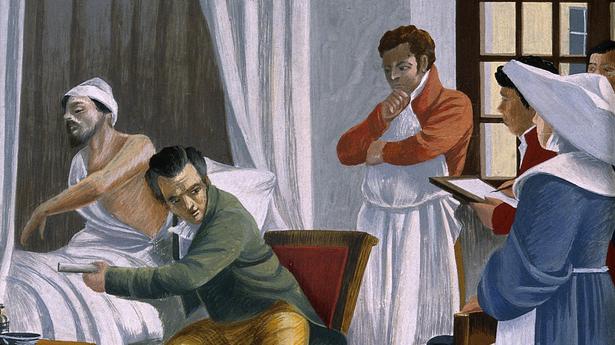
Easy like Sunday morning
The Hindu
Wherever the art of medicine is loved, there is also a love of humanity: Hippocrates
1. On June 12, 2012, researchers from The University of Nottingham announced the invention of a new porous material that has unique retention properties. Called NOTT-202, it has a unique honeycomb-like structural arrangement that allows it to trap a certain gas. This material will play a huge part in reducing emissions from fossil fuel processes. What dangerous gas does NOTT-202 capture selectively?
2. Many cultures and civilisations have known for thousands of years about the properties of salicylates. For example, the medicinal property of white willow, which contains derivatives of this substance. However, it was only in the 1800s that this chemical was first isolated in a lab. Much later, the form in which we know it today was patented. It has also been shown to reduce the risk of heart attacks. What is the generic name by which we know this painkiller?
3. While many urban legends claim that this substance can be used as a substitute for IV-fluid, it is only a last resort. This is because the composition of the substance has high potassium and low sodium levels, the opposite of the fluid in our blood. One of the reasons people believe this can be used is that until its container is cracked open it is sterile. What is this liquid that may be an emergency intravenous-fluid but is definitely not generally recommended?
4. In ancient India, a specific procedure was used to close incisions in abdominal surgeries. A certain entity would be used to hold the two ends of a wound together and then a portion of it would be cut off. The part that held the wound closed would remain there. Once the external incision was stitched up using thread, the stomach’s juices would ensure that the entities holding the wound together slowly dissolved over time, by which time the wound would have healed. What were these early forms of ‘staples’?
5. Abu Bakr Al-Razi was a physician in 9 AD who wrote a treatise on medicine called the Kitab al-hawi fi’l-tibb. This book contained the first detailed description of a deadly disease, which tormented people for centuries, before abruptly being wiped out in less than 50 years when the WHO developed a programme to target it. What disease was Al-Razi the first to accurately describe?
6. Porphyria is a rare genetic disorder, which causes extreme sensitivity to sunlight, leaving abrasions on the skin. It increases hair growth while tightening and shrinking the skin, which makes one look younger. When the skin around the mouth tightens it makes the canine teeth more prominent. Allyl disulfide is a compound that makes it worse for the patient, and it is found in garlic. Which mythical creatures, popular in stories all around the world, do scientists think could have been suffering from this disease?
7. Doctors in ancient Rome used an early form of electrotherapy to successfully treat neurological conditions such as epilepsy and migraines. They administered the charges by placing a certain animal on the patient’s head. These animals come from the genus Torpedo — the name comes from the Latin word ‘torpere’, which means to stiffen or paralyse. This happened when anyone accidentally stepped on one of these animals. What animals, which are completely made of cartilage, are these?

Podcasts have become our best friends, especially during the Covid-19 pandemic. Whether you are cooking, sketching or going on an evening walk, there is a show that matches your mood. From horror tales to informative conversations to just two friends talking about anything & everything relatable, podcasts have become a part of our lives unknowingly. Over the years, more voices have joined this audio landscape and filled it with stories that resonate with our lives. Podcasts serve as a reminder that everyone has a story worth telling and listening to!










